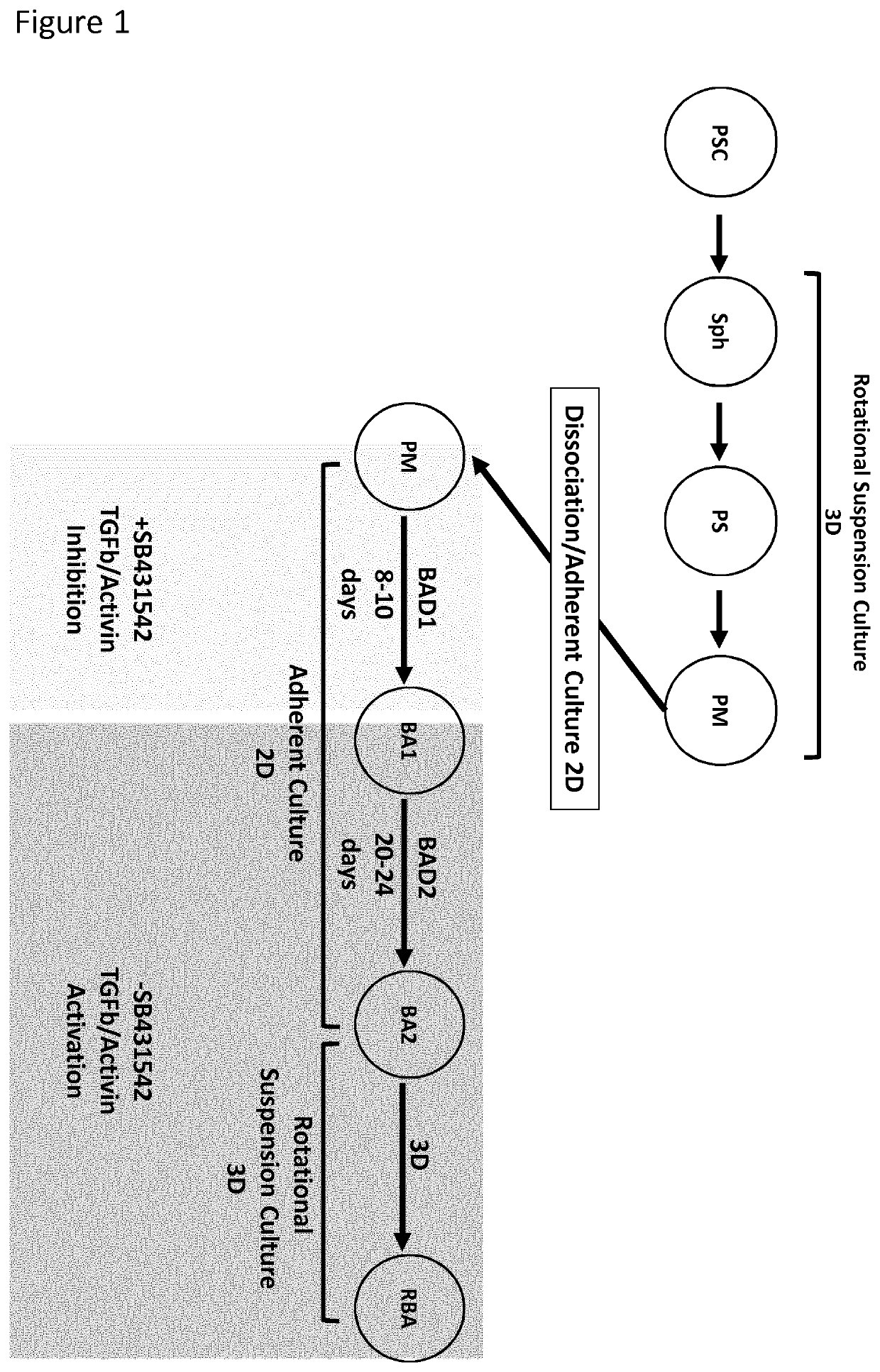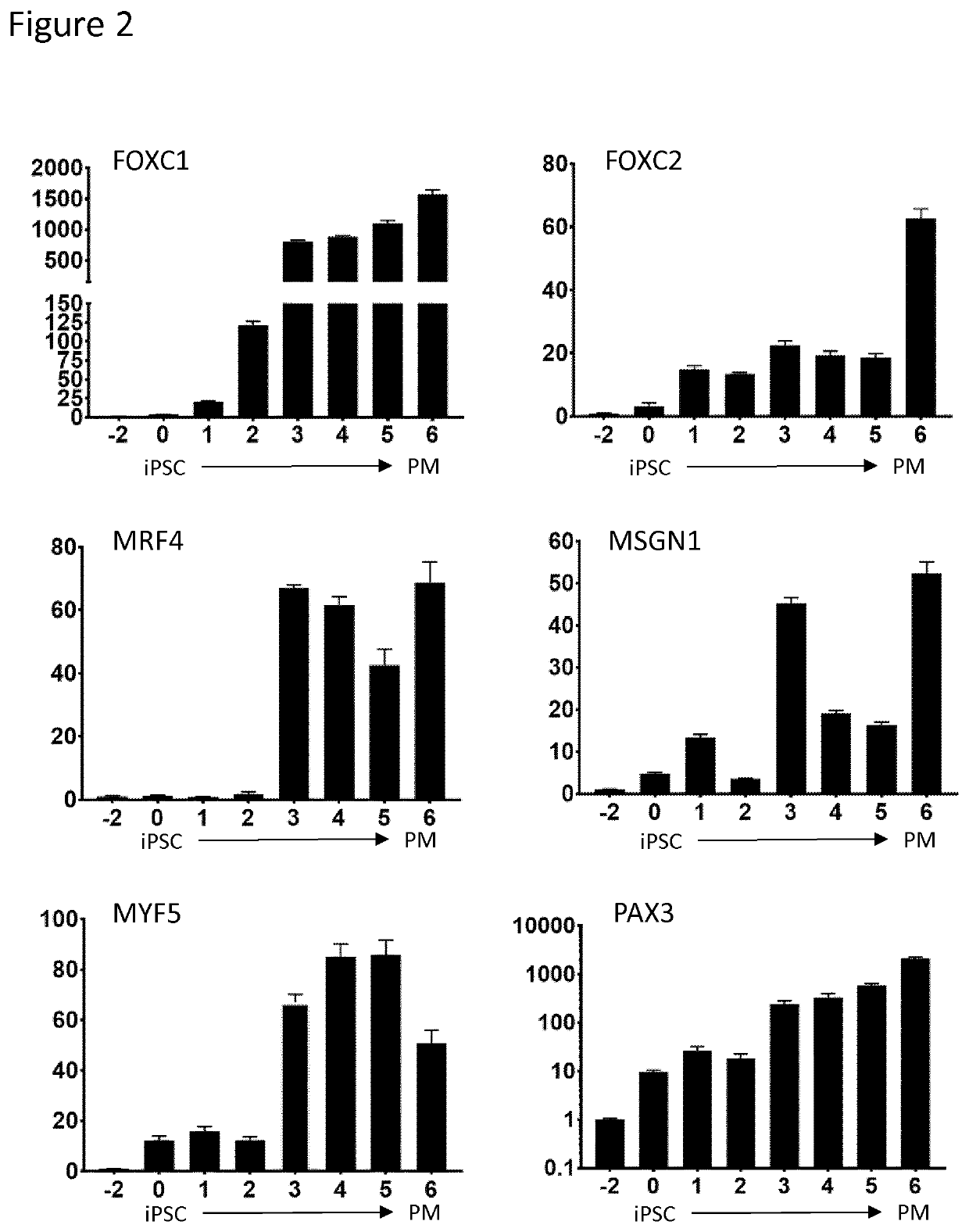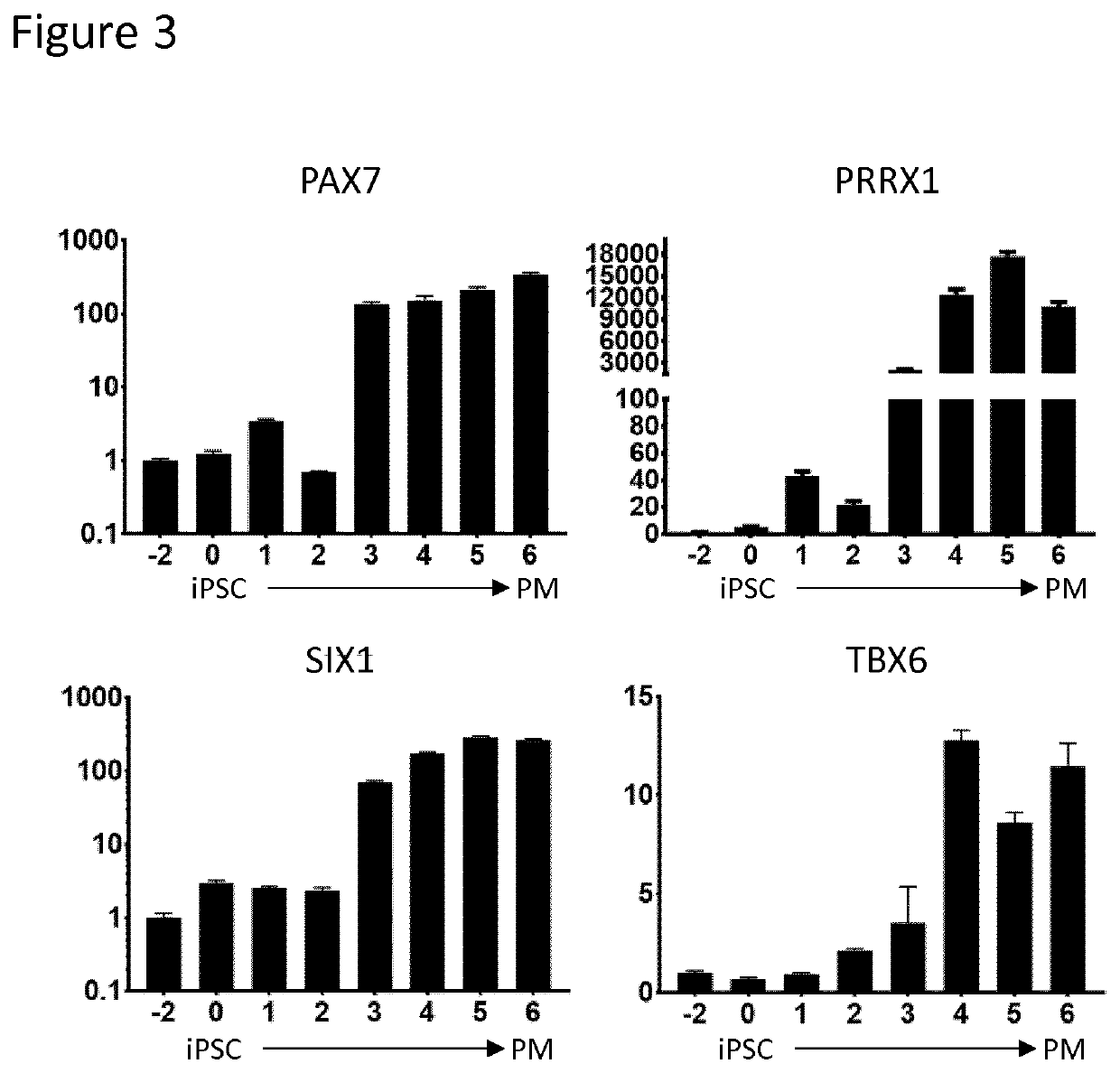Production of brown adipocytes
a technology of brown adipocytes and adipocytes, which is applied in the direction of skeletal/connective tissue cells, drug compositions, metabolic disorders, etc., can solve the problems of affecting the characteristics and function of human brown adipose tissue, and affecting the survival rate of brown adipose tissu
- Summary
- Abstract
- Description
- Claims
- Application Information
AI Technical Summary
Benefits of technology
Problems solved by technology
Method used
Image
Examples
example 1
Materials and Methods
Cell Culture and Differentiation
[0196]The human pluripotent stem cells (PSC) were seeded at 50,000 cells / cm2 on polystyrene culture plates (Thermo-Fisher, Waltham, Mass.) coated with Geltrex LDEV-Free hESC qualified reduced growth factor basement membrane matrix (Thermo-Fisher, Waltham, Mass.) at a 1:200 dilution in DMEM / F-12 without glutamine (Corning, Corning, N.Y.). Media for PSC maintenance, sphere formation, paraxial mesoderm and brown adipocyte differentiations were accomplished using a chemically defined base medium (DBM) supplemented with specific factors. DBM was composed of DMEM / F-12 without glutamine supplemented with 2% Probumin (EMD Milipore, Billerica, Mass.), 1× Antibiotic-Antimyotic (Corning, Corning, N.Y.), 1× MEM non-essential amino acids (Corning, Corning, N.Y.), 1× Trace Elements A (Corning, Corning, N.Y.), 1× Trace Elements B (Corning, Corning, N.Y.), 1× Trace Elements C (Corning, Corning, N.Y.) 50 μg / mL Ascorbic Acid (Sigma-Aldrich, St. Lou...
example 2
C-BA Implant in Mice
[0211]Two groups of mice were implanted with human brown adipocytes (hiPSC derived BA cells) produced by the methods of the present invention and encapsulated in a device subcutaneously. In one group, the mice were injected with forskolin (FSK) to stimulate the brown adipocytes. In the other group, the mice implanted with brown adipocytes were not stimulated by FSK. A control group of mice was implanted with an empty device. All groups were assessed after three weeks post-implantation for in vivo PET-SCAN imaging as well as ex vivo PET-SCAN imaging of the explanted device. The group which were implanted with brown adipocytes stimulated by FSK showed an increased signal of labelled glucose than the group implanted with brown adipocytes not stimulated by FSK as analysed by PET-SCAN imaging ex vivo. The mice implanted with empty devices showed no signal.
[0212]Calorimetric analyses were performed on group of mice implanted with encapsulated human brown adipocytes or ...
PUM
| Property | Measurement | Unit |
|---|---|---|
| time | aaaaa | aaaaa |
| time | aaaaa | aaaaa |
| time | aaaaa | aaaaa |
Abstract
Description
Claims
Application Information
 Login to View More
Login to View More - R&D
- Intellectual Property
- Life Sciences
- Materials
- Tech Scout
- Unparalleled Data Quality
- Higher Quality Content
- 60% Fewer Hallucinations
Browse by: Latest US Patents, China's latest patents, Technical Efficacy Thesaurus, Application Domain, Technology Topic, Popular Technical Reports.
© 2025 PatSnap. All rights reserved.Legal|Privacy policy|Modern Slavery Act Transparency Statement|Sitemap|About US| Contact US: help@patsnap.com



